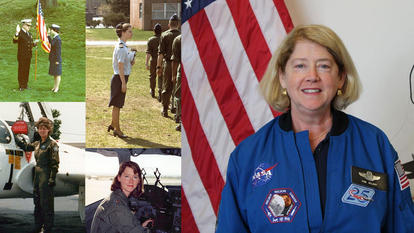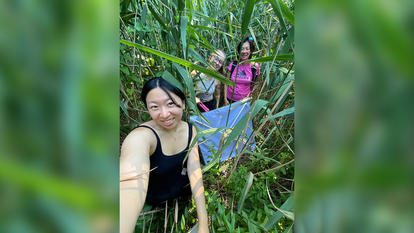Alumna Discovers New Microbes and Puts them to Work for Humans

This article, by Lisa Scanlon Mogolov ’99, originally appeared in the spring 2019 issue of Wellesley magazine.
Anne Madden ’06 found her calling as a research scientist standing in a “cathedral of plants” in the jungle at La Selva Biological Station in northeastern Costa Rica.
At the end of her junior year at Wellesley, a friend from Madden’s plant biology course told her that a space had opened up for a fellowship in Costa Rica. Madden spoke to her professors about it, excited, but when she learned that her friend Katie Moseley ’06 was also interested, she told the professors that they should really choose Moseley, since she was a Spanish and biology double major. Meanwhile, Moseley was arguing in favor of Madden. Wellesley found funding to send them both.
It was a magical experience. Madden describes learning to identify the duck-like call of a tree frog no bigger than a fingernail, and catching snakes with herpetologists. Primarily, though, she and Moseley were there to study the way that light filtering through the canopy affects plant growth. “As soon as you get off of any path, you’re in the dark. … That’s something that we never realized, that we would spend an entire summer in Costa Rica and come back pastier than when we left,” Madden remembers.
But more than anything, what stuck with Madden was the feeling she got working with scientists who were so passionate about their research and making new discoveries. “I really did love how scientists in the jungle—and scientists in general—when they start talking about what they’re doing research on, they just glow,” she says.
Madden has been chasing that feeling ever since, which over the years has led her to studying microbes in Paintshop Pond back on campus, sniffing dirt to find novel antibiotics for a biopharma company, hanging from barn rafters to collect wasps (and the bacteria on them), hunting for yeast on wasps in a Massachusetts vineyard to brew a tastier beer, and speaking on the TED Conference main stage in Vancouver, B.C.
Today, Madden’s work straddles industry, academia, and the public sphere as she discovers new microbes and puts them to work for humans. She is a partner at Raleigh, N.C.-based Lachancea, which sells novel yeasts that Madden helped discover to breweries. Until recently, she was director of scientific communication at Boston-based Indigo Agriculture, an agriculture technology company that uses plant microbes to improve crop yields. She is developing an interactive exhibit with artist Amanda Phingbodhipakkiya to introduce audiences to microbes. She has a busy social media life (@AnneAMadden on Twitter and Instagram), spreading her enthusiasm about microbes through photos and fun facts (with cameos from her kitten, Puffin). Oh, and she continues to publish research papers.
With microbes, the jungle is everywhere—and so is Madden.
The full story can be found on the Wellesley magazine website.



